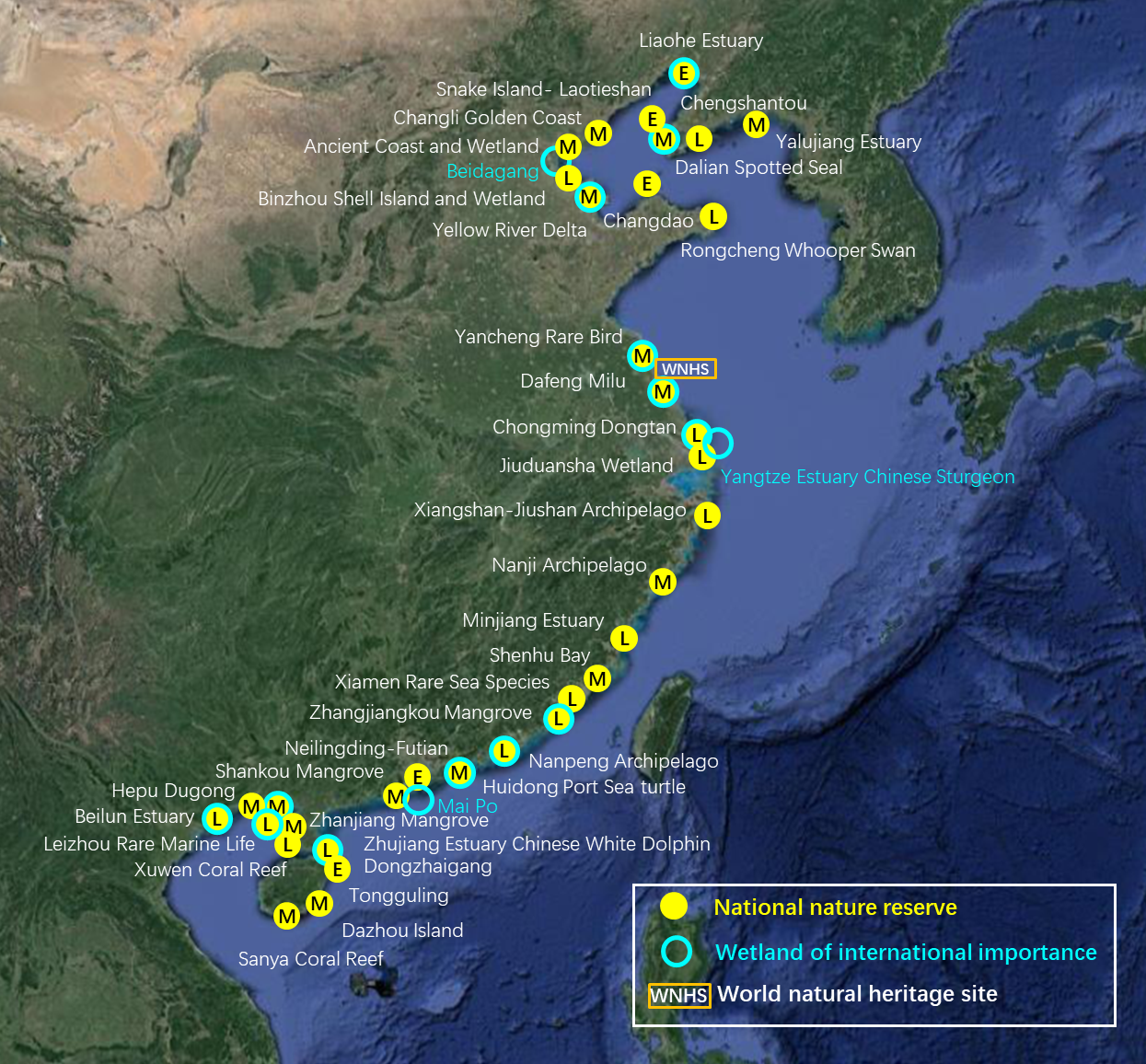Advancing Coastal Waterbird Conservation in China: Policy Progress and Challenges
已发布 21 九月, 2023
Coastal wetlands are valuable ecosystems, serving crucial roles in the carbon cycle, natural disaster mitigation, local livelihoods, and biodiversity support. Waterbirds, reliant on these wetlands, are indicative of wetland health, often considered flagship species for conservation efforts. The state of waterbirds largely mirrors coastal wetland conservation and management.
Located in the middle of the East-Asian Australasian Flyway, China's coastal wetlands serve as breeding grounds, migration stopovers, and winter habitats for tens of millions of waterbirds. Unfortunately, extensive land reclamation projects have led to a decline in waterbird populations. While China has made significant efforts and investments in coastal wetland conservation in recent years, together with a strong commitment to future ecological conservation and restoration, the effectiveness of these conservation measures and any existing gaps remain unclear.
To that end, Zhijun Ma, an ornithologist at Fudan University, along with other ornithologists and conservationists, recently published a review in the KeAi journal Avian Research.
The researchers highlighted the notable progress in national-level conservation legislation, regulations, and action plans, accompanied by improved policy effectiveness and stakeholder engagement. Nonetheless, several pressing issues persist, primarily revolving around habitat conservation and management.
These issues include the restoration of coastal wetlands, the control of invasive Spartina alterniflora (smooth cordgrass), the management of environmental pollution, and the enhancement of artificial habitat quality. The authors emphasize the critical importance of safeguarding natural tidal wetlands and elevating habitat quality, particularly for coastal waterbirds highly reliant on intertidal habitats.
Furthermore, some projects, promoted as "ecological restoration" with substantial investments in vital waterbird sites, have inadvertently converted natural tidelands into harmful artificial landscapes, threatening waterbird conservation.
“We recommend regular pollutant monitoring, along with eco-friendly economic models and restricting agrochemicals, insecticides, fungicides, and antibiotics in coastal areas,” said Ma. “Many waterbirds, including threatened species, frequent human-managed habitats. Mitigating human activity impact and addressing human-bird conflicts are essential aspects for coordinating conservation with local economic development.”
In 2022, China's central government set an ambitious aim to eradicate invasive Spartina along the coast, targeting a 90% reduction in invaded areas by 2025. The authors highlight that there are still challenges including tailoring methods to regional conditions, mitigating large-scale project impacts on the local environment and biodiversity, and preventing future Spartina re-invasion. Swift habitat restoration post-Spartina eradication is needed to create suitable waterbird habitats.
“Nevertheless, we believe there are great opportunities for further improving the efficacy of waterbird conservation and coastal wetland protection in China. What we need for future coastal waterbird and wetland conservation is more science-based and evidence-based decision-making and actions,” added Ma.

Contact the corresponding author and email address: Zhijun Ma, zhijunm@fudan.edu.cn
Funder: This study was financially supported by the National Key Research and Development Program of China (2022YFF1301004) and the National Natural Science Foundation of China (31830089 and 32170518). TP's work in the East Asian-Australasian Flyway through the Global Flyway Network was supported by WWF-Netherlands, the MAVA Foundation, and many other benefactors.
Conflict of interest: The authors declare that they have no known competing financial interests or personal relationships that could have appeared to influence the work reported in this paper.
See the article: Ma, Z., Choi, C. Y., et al.. Achievements, challenges, and recommendations for waterbird conservation in China’s coastal wetlands. Avian Research, 14 (2023), 100123. https://doi.org/10.1016/j.avrs.2023.100123